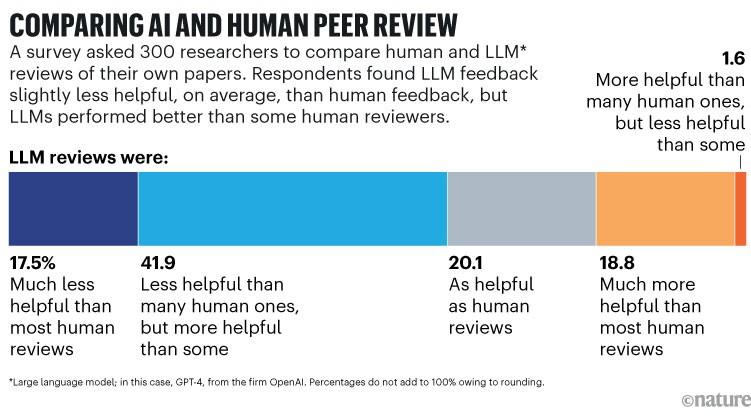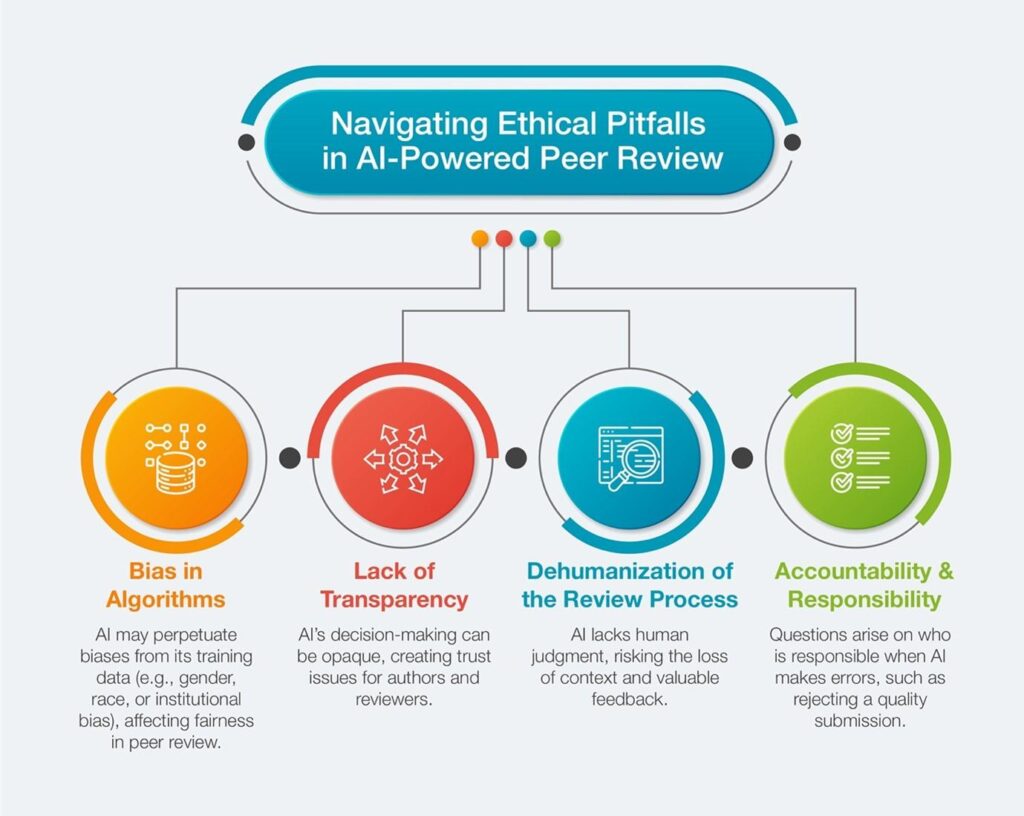In the ever-evolving landscape of academic publishing, the peer review process stands as a critical gatekeeper of knowledge and quality. Yet, as the volume of research surges and the demand for timely, rigorous evaluation intensifies, traditional methods face mounting challenges. Enter artificial intelligence-a transformative force reshaping industries across the globe. Academic journals, long rooted in human expertise and judgment, are now beginning to weave AI into their peer review workflows. This integration promises not only to enhance efficiency and consistency but also to spark fresh conversations about the future of scholarly communication. In this article, we explore how academic journals are embracing AI peer review, navigating its complexities, and redefining the pursuit of credible science.
Table of Contents
- Understanding the Role of AI in Modern Peer Review Processes
- Enhancing Accuracy and Efficiency Through Machine Learning
- Balancing Human Judgment and Algorithmic Insights in Editorial Decisions
- Addressing Ethical Considerations and Bias in AI-Driven Reviews
- Best Practices for Journals Implementing AI Peer Review Systems
- Frequently Asked Questions
- The Conclusion
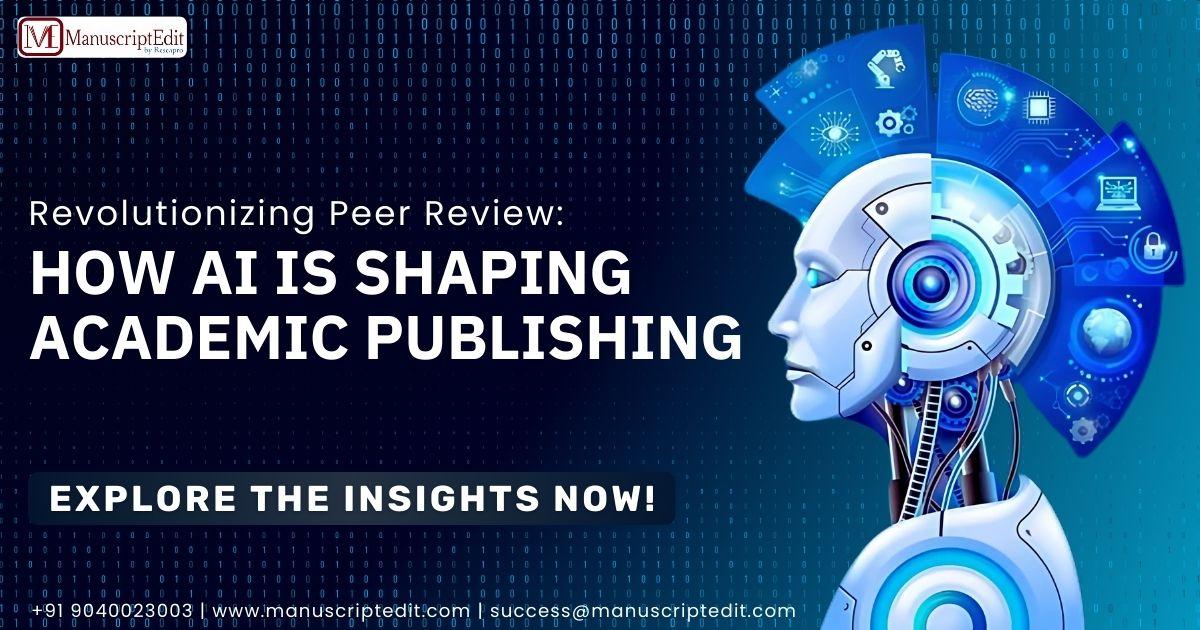
Understanding the Role of AI in Modern Peer Review Processes
Artificial Intelligence has become an indispensable ally in the realm of academic publishing, transforming how manuscripts are evaluated before they reach the hands of human reviewers. Its integration streamlines the peer review process by automating preliminary checks, identifying potential ethical issues, and flagging inconsistencies in data or citations. This allows human reviewers to focus more on the nuanced critique of scientific merit rather than administrative or repetitive tasks.
One of the most impactful applications of AI is in enhancing the quality and speed of reviews. Algorithms can quickly analyze a manuscript’s structure, detect plagiarism, and assess adherence to journal guidelines. Additionally, AI tools assist editors in selecting suitable reviewers by matching manuscript content with experts’ profiles, increasing the likelihood of insightful, relevant feedback. This synergy between AI and human judgment cultivates a more efficient and transparent editorial workflow.
- Automated Screening: Checks for language clarity, formatting, and ethical compliance.
- Reviewer Matching: AI suggests reviewers based on expertise and past performance.
- Quality Control: Highlights statistical anomalies and potential methodological flaws.
| AI Feature | Benefit | Impact on Review Time |
|---|---|---|
| Plagiarism Detection | Ensures originality | Reduces by 30% |
| Automated Formatting Check | Maintains submission standards | Reduces by 20% |
| Reviewer Recommendation | Improves reviewer selection | Reduces by 25% |
Despite these advancements, it is crucial to recognize that AI does not replace the critical thinking and expertise of human reviewers but rather complements it. The future of peer review lies in this collaboration, where AI handles routine tasks and humans provide the intellectual rigor, ensuring that academic publishing remains both rigorous and timely.
Enhancing Accuracy and Efficiency Through Machine Learning
Machine learning algorithms have revolutionized the peer review process by automating tasks that traditionally required significant manual effort. By analyzing vast datasets of published papers and reviewer feedback, these models can identify patterns that predict the quality and relevance of submissions. This integration not only speeds up decision-making but also minimizes human bias, ensuring a more objective evaluation of academic work.
One of the key advantages lies in the ability to detect subtle errors and inconsistencies that might escape even expert eyes. For example, natural language processing techniques can flag potential plagiarism, methodological flaws, or statistical anomalies, enabling editors to request revisions or reject unsuitable manuscripts promptly. This proactive approach preserves the integrity of scholarly communication while reducing the burden on human reviewers.
- Automated relevance scoring: Prioritizes papers aligning closely with journal scope.
- Reviewer recommendation: Matches manuscripts to experts based on publication history and expertise.
- Sentiment analysis: Gauges the tone of peer comments to highlight contentious points.
| Feature | Benefit | Impact on Workflow |
|---|---|---|
| Automated Screening | Faster initial assessment | Reduces editorial backlog |
| Bias Detection | More equitable reviews | Improves fairness |
| Quality Metrics | Data-driven evaluations | Enhances decision confidence |
By embedding these intelligent systems within editorial workflows, journals achieve a harmonious balance between human expertise and computational precision. This synergy not only elevates the accuracy of peer assessments but also liberates reviewers to focus on nuanced scientific discourse rather than administrative tasks. The result is a more efficient and trustworthy publication ecosystem that continuously adapts to the evolving landscape of academic research.
Balancing Human Judgment and Algorithmic Insights in Editorial Decisions
Editorial teams in academic publishing stand at a fascinating crossroads where human intuition meets machine precision. While AI algorithms excel at scanning vast quantities of data, spotting patterns, and flagging potential inconsistencies, they lack the nuanced understanding that comes from years of scholarly expertise. Editors are increasingly leveraging AI to handle initial screenings-such as plagiarism checks, citation verifications, and methodological assessments-allowing them to focus their intellect and judgment on the broader implications and originality of the work.
Key considerations in this hybrid approach include:
- Contextual Understanding: Human reviewers can interpret subtle theoretical nuances that AI might overlook.
- Ethical Sensitivity: Complex decisions involving conflicts of interest or ethical dilemmas require human discretion.
- Algorithmic Transparency: Editors must understand how AI models reach conclusions to avoid blind trust in automated suggestions.
To illustrate, here is a simplified comparison of tasks typically handled by humans versus algorithms during peer review:
| Review Task | Algorithm Strengths | Human Strengths |
|---|---|---|
| Plagiarism Detection | Rapid scanning of databases | Contextual judgment on originality |
| Statistical Validity | Identifies numerical inconsistencies | Assesses appropriateness of methods |
| Content Relevance | Keyword and topic matching | Evaluates novelty and impact |
Ultimately, the most effective editorial decisions emerge from a dynamic interplay where AI tools serve as powerful assistants rather than replacements. The goal is a symbiotic relationship that amplifies human judgment, ensuring that academic publishing remains rigorous, fair, and forward-thinking.
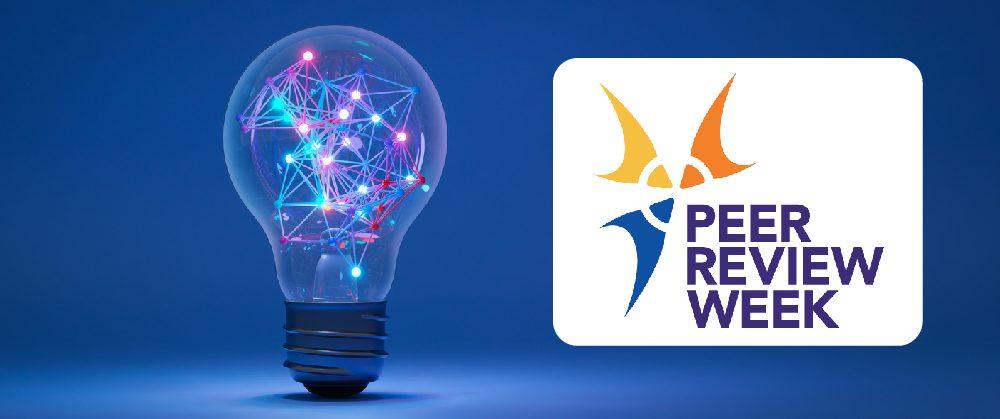
Addressing Ethical Considerations and Bias in AI-Driven Reviews
As AI-driven peer review systems become integral to academic publishing, journals are increasingly vigilant about ensuring these technologies uphold the highest ethical standards. A major concern is the potential for algorithmic bias, which can subtly influence the evaluation process, skewing outcomes based on factors such as the author’s institution, geographic location, or even language style. To counteract this, many publishers are implementing rigorous audits and transparency protocols, ensuring that AI tools function fairly and impartially across diverse submissions.
Ethical safeguards extend beyond bias mitigation. Journals are developing robust frameworks to protect author confidentiality and intellectual property when AI systems analyze manuscripts. This includes limiting data exposure and incorporating encryption techniques during automated assessments. Furthermore, editorial boards are emphasizing human oversight, recognizing that AI should support-not replace-the nuanced judgment of expert reviewers.
- Regular bias testing: Periodic evaluation of AI models to identify and correct systemic biases.
- Transparent algorithms: Open disclosure of AI decision-making criteria to build trust among authors and reviewers.
- Human-AI collaboration: Combining machine efficiency with human ethical reasoning.
- Data privacy measures: Ensuring manuscript data remains confidential and secure during AI processing.
| Challenge | AI Solution | Ethical Measure |
|---|---|---|
| Bias in manuscript scoring | Algorithmic fairness tuning | Regular audits and updates |
| Confidentiality concerns | Encrypted data handling | Restricted AI access levels |
| Lack of transparency | Explainable AI models | Open reporting of criteria |
| Overreliance on AI | Hybrid review processes | Mandatory human review |
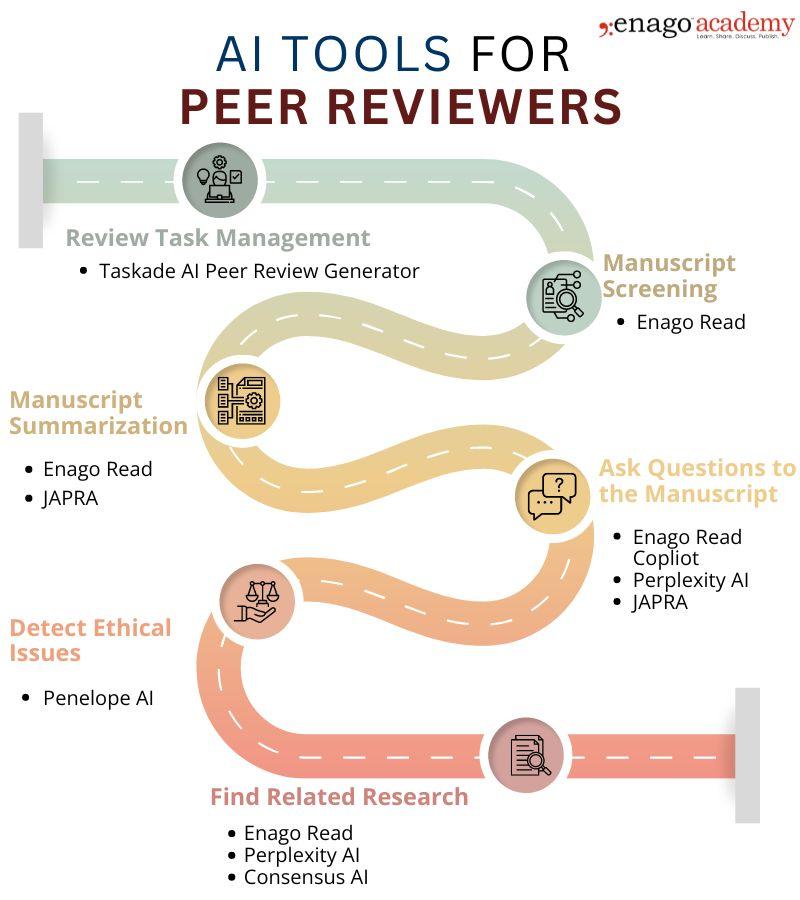
Best Practices for Journals Implementing AI Peer Review Systems
Integrating AI into the peer review process requires journals to strike a careful balance between automation and human expertise. Transparency is paramount; journals must clearly communicate how AI tools are used to authors, reviewers, and readers to foster trust and maintain academic integrity. This includes outlining the AI’s role-whether it assists in initial screening, flags potential ethical concerns, or supports reviewers by summarizing key points.
Another vital practice is the continuous monitoring and evaluation of AI algorithms. Academic content evolves rapidly, and models must be periodically retrained to avoid biases and ensure accuracy. Maintaining a feedback loop where human editors review AI decisions helps refine the system and catch errors that automated processes might overlook.
Journals should also invest in comprehensive training for editorial staff and reviewers on how to best utilize AI tools. Empowering users with knowledge about AI’s capabilities and limitations encourages collaborative workflows where technology enhances, rather than replaces, critical judgment.
- Ensure AI tools complement, not replace, human reviewers
- Maintain transparency with authors and readers about AI involvement
- Regularly update AI models to reflect current academic standards
- Establish feedback mechanisms to catch AI errors early
- Provide training sessions to editors and reviewers on AI use
| Best Practice | Purpose | Impact |
|---|---|---|
| Transparent AI Usage Policies | Builds trust with stakeholders | Improved author satisfaction |
| Regular Algorithm Audits | Reduces bias and errors | Higher review quality |
| Human-AI Collaboration | Balances efficiency with expertise | More nuanced evaluations |
| Training & Support Programs | Enhances user competence | Smoother integration |
Frequently Asked Questions
Q&A: How Academic Journals Are Integrating AI Peer Review
Q1: What is AI peer review in the context of academic publishing?
A: AI peer review refers to the use of artificial intelligence tools to assist or automate parts of the manuscript evaluation process. These tools analyze submissions for factors like originality, methodological soundness, ethical compliance, and language clarity, complementing human reviewers to enhance efficiency and consistency.
Q2: Why are academic journals adopting AI in their peer review processes?
A: The increasing volume of research submissions has strained traditional peer review systems, often causing delays and reviewer fatigue. AI integration aims to streamline workflows, reduce biases, detect errors or plagiarism early, and help editors make more informed decisions faster.
Q3: How do AI systems support human reviewers rather than replace them?
A: AI acts as a preliminary filter or assistant, flagging potential issues such as statistical anomalies, ethical concerns, or language problems. Human experts then interpret these insights, applying their nuanced judgment and domain knowledge to finalize reviews, ensuring that AI augments rather than substitutes human expertise.
Q4: What challenges do journals face when implementing AI peer review?
A: Key challenges include ensuring AI tools are transparent and unbiased, maintaining confidentiality and data security, integrating AI outputs seamlessly with editorial workflows, and addressing skepticism from authors and reviewers wary of automated assessments.
Q5: Can AI detect plagiarism and data fabrication effectively?
A: Yes, AI-powered plagiarism detectors are widely used and highly effective in spotting copied text. Emerging AI models also analyze datasets and images for inconsistencies or manipulations, though these techniques are still evolving and typically require human verification.
Q6: How does AI impact the quality and fairness of peer review?
A: By providing objective checks and reducing human errors or unconscious biases, AI can enhance fairness and consistency. However, the quality depends on the AI’s design and training data; poorly designed systems risk perpetuating biases or overlooking creative, unconventional research.
Q7: What future developments are expected in AI-assisted peer review?
A: Future innovations may include more sophisticated natural language understanding to evaluate argument coherence, real-time reviewer assistance, and broader integration with open peer review platforms. Continuous refinement will aim to balance automation with human insight for optimal scholarly evaluation.
Q8: How are authors responding to the use of AI in peer review?
A: Reactions vary-some authors appreciate faster turnaround times and clearer feedback, while others express concerns about AI misjudging novel ideas or lacking contextual understanding. Transparent communication from journals about AI’s role helps build trust and acceptance.
Q9: Will AI peer review change the role of human reviewers?
A: Rather than replacing reviewers, AI is reshaping their role to focus more on critical thinking, interpretation, and mentorship. Reviewers may spend less time on routine checks and more on providing nuanced, constructive feedback that AI cannot replicate.
Q10: Where can interested researchers learn more about AI integration in academic publishing?
A: Many publishers and industry groups publish white papers, webinars, and guidelines on AI in peer review. Academic conferences on scholarly communication and journals dedicated to publishing science also offer valuable insights and ongoing discussions on this evolving topic.
The Conclusion
As the pages of academic journals continue to turn toward the future, the integration of AI in peer review represents not just a technological shift, but a reimagining of scholarly collaboration. While challenges remain, the blend of human insight and machine precision holds the promise of a more efficient, transparent, and inclusive review process. In this unfolding narrative, AI is not replacing the discerning eye of the expert but enhancing it-ushering in a new chapter where knowledge is vetted with unprecedented rigor and speed. The story of academic publishing is evolving, and with AI as an unlikely co-author, the next volume is already taking shape.